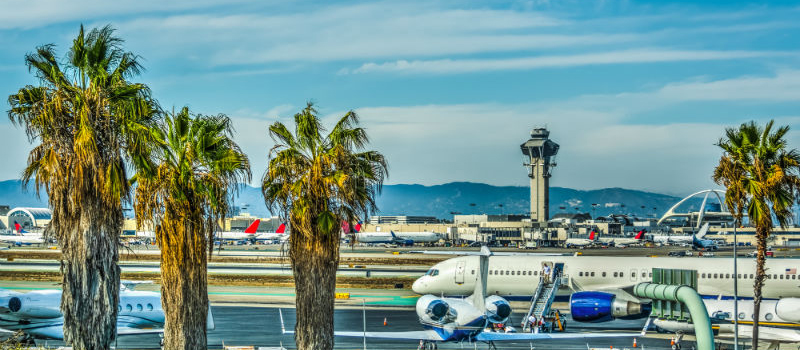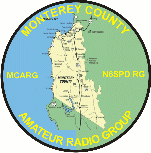

WALA / IRLP OPERATING GUIDELINES
In order to gain access to the
IRLP node, you must read and agree to abide by the guidelines below. Please
take a moment to read these. You may even want to print the page. We look
forward to seeing you on the node.
Thanks to Dave Cameron VE7LTD, Amateur Radio is receiving a new breath of
life through his Internet Radio Linking Project. Many repeaters
around the world that were next to empty are now alive and well with
radio amateurs now speaking with other hams around the world.
As with any new technology, it does take some time to adapt to operating
procedures that differ from conventional FM repeater use.
There are two connection modes for an IRLP connection. Direct one-to-one or,
one-to-many via a Reflector. Direct connect is just like it sounds where
repeater (node) "A" connects direct with node "B". With this type of link
the two nodes are interconnected and no other IRLP connections are possible.
While repeaters "A" and "B" are connected, anyone attempting to connect with
either node will be told by a recording that - "The node you are calling is
currently connected to callsign or node number" however all local traffic on
each repeater will be heard on the other repeater as well.
While Direct Connect is preferred for a city to city chat, the most
common type of connection in use today is via the WALA LAX -Hub.
Reflector (Ref9350). A reflector is a Linux computer that is not
connected to any radio but rather sits on lots of internet bandwidth
capable of allowing many repeaters to be inter-connected together by
streaming the received audio back to all other connected stations. At
any given time there are usually 6 to 10 repeaters around the world
interconnected via this Reflector. You can always check which stations
are connected to the reflector by visiting
Reflector 9350
Status.
With reflector use the first thing we must all remember is to leave a
gap between transmissions. Having said that this is a good time to list
the three main rules when connected to a reflector:
1. Pause
2. Pause
3. Pause
Due to the slight increase in delays created by multiple Tone Squelch
radios in the links between the repeater and IRLP link radio, a slight
change in our normal operating procedures is required with IRLP.
By leaving a pause between transmissions it.....
allows users on other nodes a chance to check in.
allows other nodes time to send touch-tone commands to drop their node.
The most important guideline to remember is leaving a pause after
pressing the PTT button as well as between transmissions.
Round tables are conversations involving more than 2 parties. Unlike a
net a roundtable requires some organization to keep the conversation
thread passing in an orderly fashion from party to party. Do not become
intimidated if a group grows and, if mobile; do not be overly concerned
if you are unable to remember all or any callsigns. Just try and
remember the call and or name of the next station that you pass it to.
If you are listening and wish to break into a conversation, let a cycle
go by so you know what the participating stations callsigns are then
announce your callsign during one of the "pauses". You should be
recognized and then when finished with your transmission be sure to
specify who you are turning it over to. If you do not specify a station
to pick up the connection chaos will result as 2 or more stations may
try to talk at once.
Announcing you are looking for a QSO or acknowledging someone else's call
differs from your local repeater were you usually just give your
call. With IRLP your transmission is now being heard on many repeaters
around the world and others may not just be sure what your intentions
may be.
To resolve this it is a good idea to give your callsign (phonetically)
along with your name and your QTH and state you are monitoring for a
call. Many listeners are mobile and may only pick out your prefix, your
name or possibly just youre QTH.
When you hear a station that you wish to speak with always identify who
your call is meant for. It is not a good idea to simply state your call
but rather your call and your intentions.
Scenario: Several stations including a DX station complete a QSO and you
wish to contact the DX station. Action: VK3xxx this is Joe N7xxx in
Sierra Vista, Arizona. By doing this rather than just IDing with your
call, you leave no question who you wish to speak with. A simple ID many
times goes unanswered as neither station knows who you are calling.
When an existing conversation is underway and the topic of conversation is
of interest, just give your callsign between breaks and the next station to
take it should acknowledge you and bring you into the QSO.
PLEASE do not break into an existing QSO because you want to work one of
them. This is poor ham radio etiquette and on HF would result in a severe
chastisement :-)
Nets on a reflector without prior approval of the Reflector manager are
highly frowned on and will no doubt be quickly challenged by someone. A
roundtable can sometimes be construed as a net so be somewhat careful if a
group gets too large as it tends to monopolize the reflector.
First of all listen on your local machine for at least 15 -30 seconds
before transmitting and then ask if the repeater is currently in use.
Assuming all is clear, identify your self and give the node name or
number you wish to call. Example: "N7xxx bringing up node 1234" - - then
enter the four digits of the node you are bringing up and release your PTT.
Your local repeater should come up with a carrier as it waits for the
connection to be authenticated. This can take a few seconds of
dead-air so don't be concerned. When the connection is confirmed, the
voice ID of the destination node will be transmitted back to you as well
as your nodes voice ID to the other repeater a greeting will play saying;
-"your node is currently connected to...ID of the connection") In this case
confirm if anyone desires the connection to remain up before dropping by
using the OFF code (73)..
Once connected and after hearing the confirming voice ID, wait at least
15 seconds before transmitting as.......
The repeater may be in use, and your entry may have occurred between
transmissions.
The voice ID of your node is longer than the voice ID of their node,
and the connection is not made until the ID is fully played.
Their computer may be slower, and hence take longer to process the
connection than yours. Press and hold the microphone PTT for a second and
then announce your presence and your intention such as you are calling
someone specifically or just looking for a QSO with another ham in that
city.
If no response is heard, announce your call and your intent to drop the
link and then touch- tone in the OFF code which is entering the two
digits of 73. Not a good idea to transmit touch-tone commands without
first giving your call-sign. Not only is this courteous it is a
regulatory issue in some countries who may be connected to the reflector.
Some nodes are configured so you cannot connect to them if that repeater is
active. In this case you will receive the message "The node you are calling
is being used locally" If you receive this message wait 5 or 10 minutes and
then try again.
If you stay connected to a node and there is no activity on your
repeater for 6 minutes, the connection will time out and automatically
disconnect with a voice ID disconnect message on both nodes.
As above, listen to your local machine for local use and then announce
your intention for the Reflector before keying the four digit ON command
(reflector number). When you hear the confirmation ID always WAIT at
least 15 seconds before transmitting as you are most likely now
connected with many repeaters and a QSO could be in progress. If after
15 seconds you hear nothing, identify yourself and indicate you are
listening to the Reflector from "City and State". With the world wide
IRLP activity your local repeater now has world wide coverage thus the
suggestion to better detail your QTH.
By default, connections to the reflectors now time out with no activity;
however, many node owners set this period for a long period so it is not
unusual for repeaters with minimal traffic to stay connected to the
Reflector for extended periods of time. When or if the node times out
from a Reflector connection a standard time-out greeting will precede
the timeout saying, "Activity time out ... Reflector xxx, link off"
If you hear or wish to engage in a prolonged rag-chew on your local
repeater (long discussion of a local nature) out of courtesy to other
node listeners drop the reflector.
>From time-to-time you may receive error messages when attempting to connect
with a node or reflector. The most common ones are: "The node you are
calling is not responding, please try again later" This is
caused by a loss of internet connectivity to one end of the call
attempt. "BEEP Error- The call attempt has timed out, the connection has
been lost" This error occurs when a node is OFF-LINE. Some nodes such as in
the UK use dial-up connections and then, only for short periods. Also there
may be temporary net or node problems. "The Connection Has Been Lost" If the
internet connection drops, this error message will be heard. I found this
out when I accidentally kicked out my network cable while working around the
node computer.
In summary then a few do's and don'ts
DO pause 3 Seconds between transmissions to let others in or
others to enter
DTMF commands.
DO identify before sending DTMF command tones.
DO hold your microphone PTT for about 1 second before talking
to allow all systems time to rise.
DO NOT rag-chew on the local repeater while connected to any reflector.
DO pause for 10 seconds when entering any reflector before talking.
DO NOT start or plan a Net without pre-authorization from any
reflector owner
PS:This system has a security code too link up so please call for a
Control Oprator

